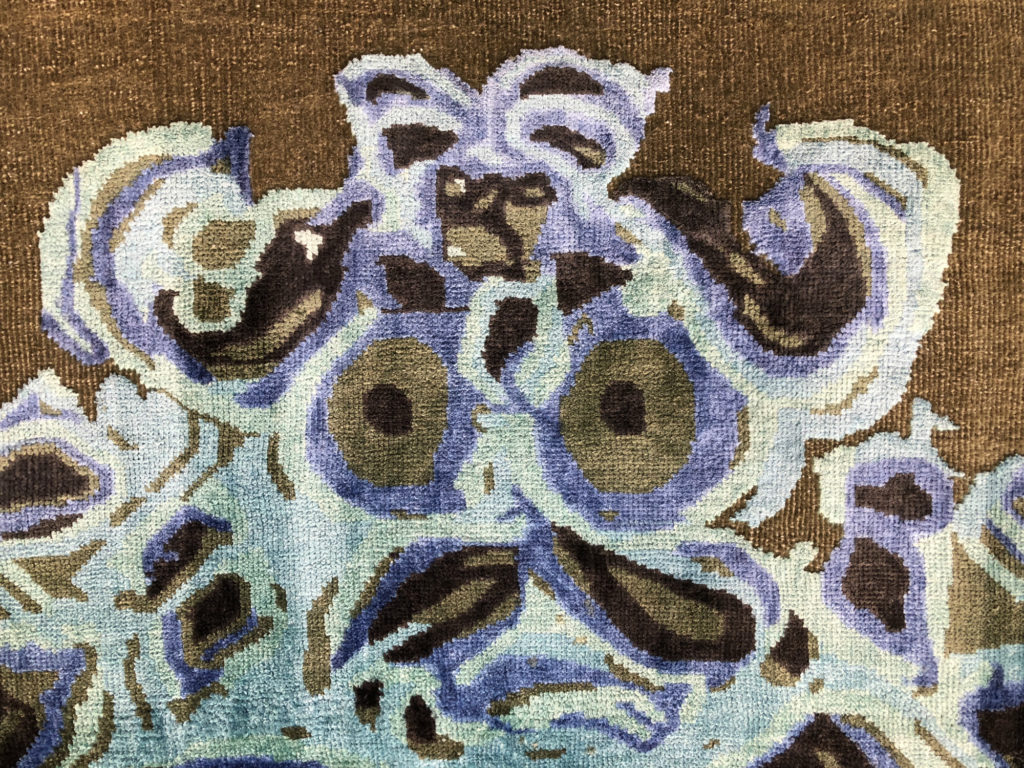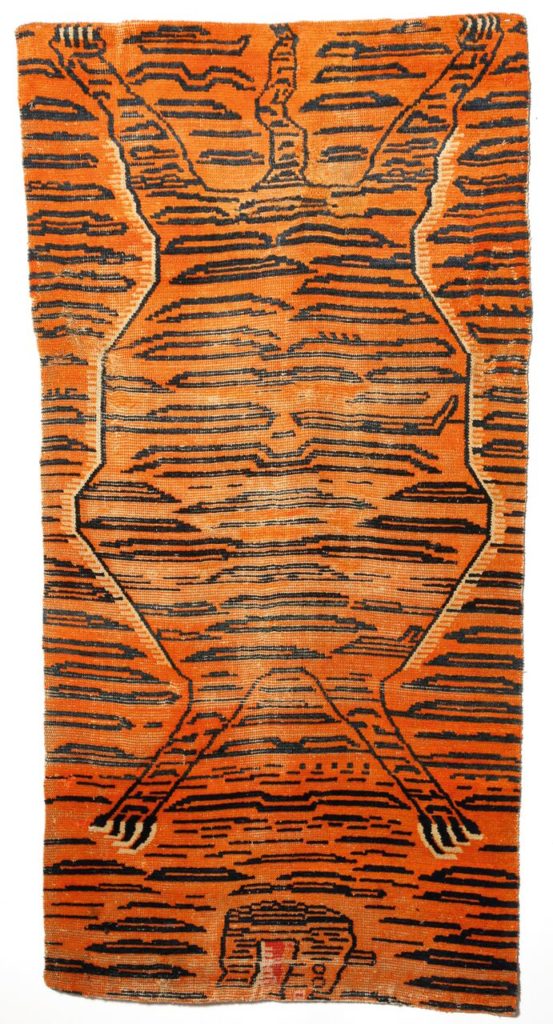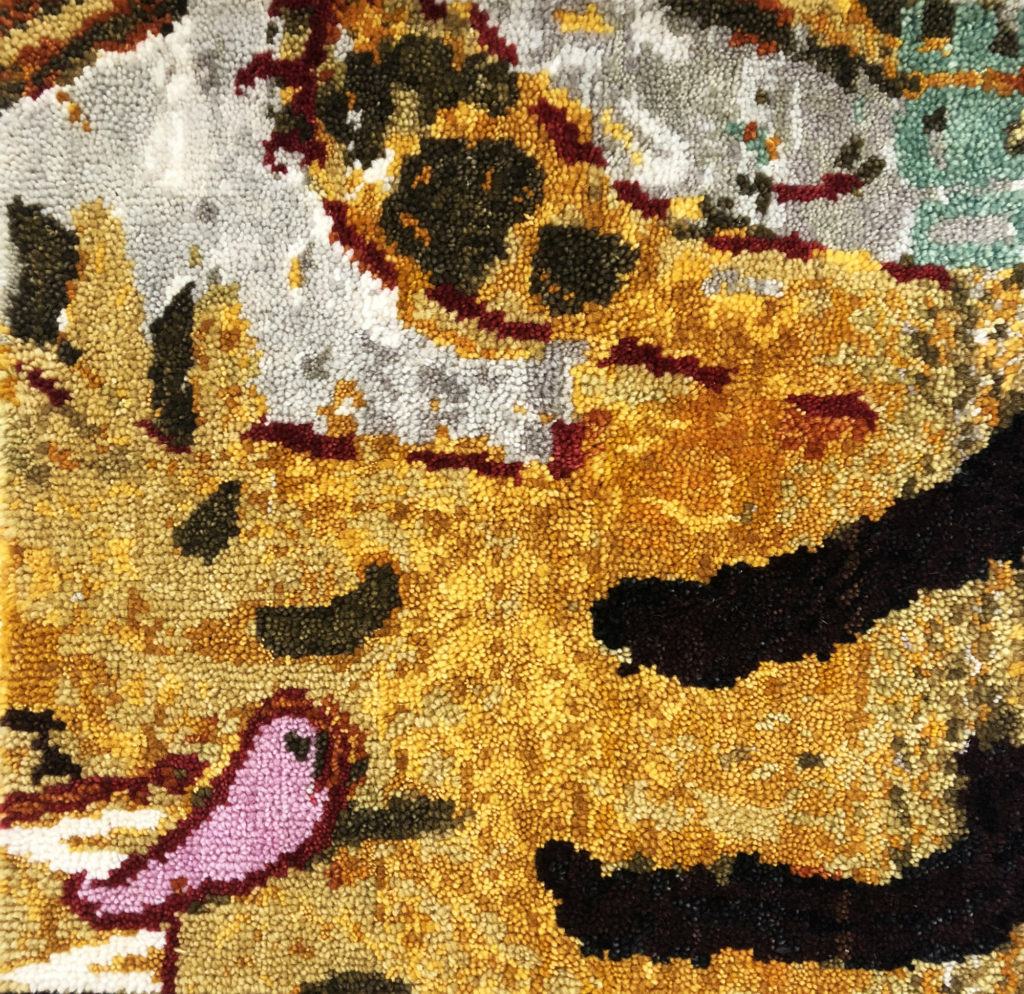Art World
Gary Hume, Kiki Smith, and Other Artists Are Designing Tibetan-Style Rugs to Raise Money for Endangered Tigers
Hume says that traditional Indian weavers are using a flamethrower to make his tiger rug.

Hume says that traditional Indian weavers are using a flamethrower to make his tiger rug.

Javier Pes

There are fewer surviving Tibetan tiger rugs than there are real tigers in the wild, but a group of leading contemporary artists are designing new versions inspired by the 19th-century originals in order to help save the endangered big cats. The project, called Tomorrow’s Tigers, announced this week, aims to raise more than $1 million for the World Wildlife Fund to help protect the tigers’ habitats and fight poachers.
The fund wants to double the number of tigers in the wild by 2021, the next Chinese year of the tiger, which is also a goal of the Leonardo DiCaprio Foundation. (The actor is on the board of the World Wildlife Fund.)
Artists who are designing the contemporary Tibetan-style rugs include Gary Hume, Rose Wylie, Anish Kapoor, Maya Lin, Kiki Smith, Francesco Clemente, Ellen Gallagher, Reena Saini Kallat, Harland Miller, Raqib Shaw, and Bernard Frize, who also owns one of the rare Tibetan tiger rugs, of which only 164 are believed to exist. The contemporary rugs and 11 examples of the historic Tibetan ones are due to go on show at Sotheby’s London in January.

Antique Tibetan Tiger Rug. Nelly Frize Collection.
Gary Hume tells artnet News that he had a “very vague idea,” about Tibetan tiger rugs before he was asked to design a contemporary version, and so had to research them online. “I saw the old ones. They are just beautiful,” he says. He says that his design, which is the first tiger he has created, is “symbolically abstract.”
Hume says: “I can tell it’s a tiger, most people will wonder what it is.” He compares designing a rug to making a print, “you have to understand the material.” The technique used by artisans in northern India is fascinating, he says. His design is made of wool and silk. “You burn the wool off using a flamethrower and dampen the silk so that it doesn’t burn.”
Each artist-designed rug will be a unique work made by artisans in Mirzapour, northern India, who will work with the contemporary rug maker Christopher Farr. The traditional weavers use natural wool that has been hand dyed. Made in an edition of 10, prices will start at £10,000 ($13,000).
“I’d love one. I’d definitely put it at home,” Hume says. Asked if he thinks DiCaprio might go for a full set, he says: “I’ve no idea but he’s probably got a few floors he could put them on.”

Rose Wylie. Detail of rug sample for Tomorrow’s Tigers 2018. Image copyright Christopher Farr.
The number of tigers in the wild is estimated to be around 3,900. Profits from the project will support tiger conservation in Bangladesh, Bhutan, Cambodia, China, India, Indonesia, Laos, Malaysia, Myanmar, Nepal, Russia, Thailand, and Vietnam.
Organized by curators at Artwise, the germ of the idea to commission artists to make Tibetan-style rugs dates back to an exhibition held at London’s Hayward Gallery in 1988. “The Tiger Rugs of Tibet” was based on the collection built by Mimi Lipton, an Austrian-born, London-based art dealer turned rug and jewelry collector. The original rugs were made as gifts for Buddhist monks. The tiger skin design was thought to protect them during meditation.
Hume did not go to see the Hayward show. “I probably wasn’t interested in rugs in 1988. I would go at a drop of the hat now,” he says.
“Tomorrow’s Tigers” will go on sale at Sotheby’s London, January 11-17, 2019.